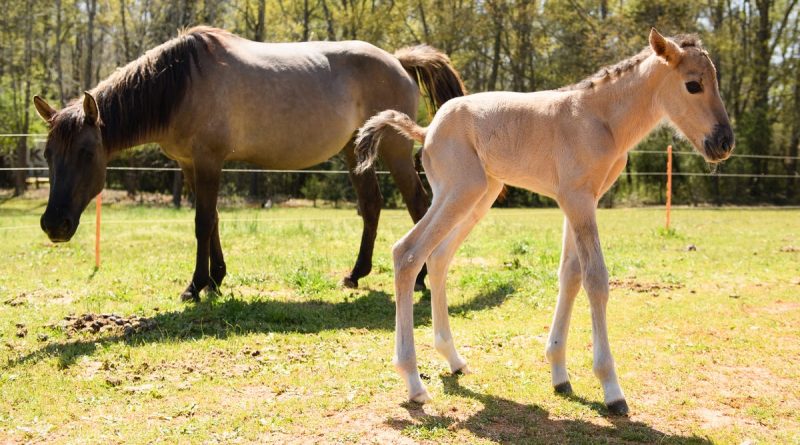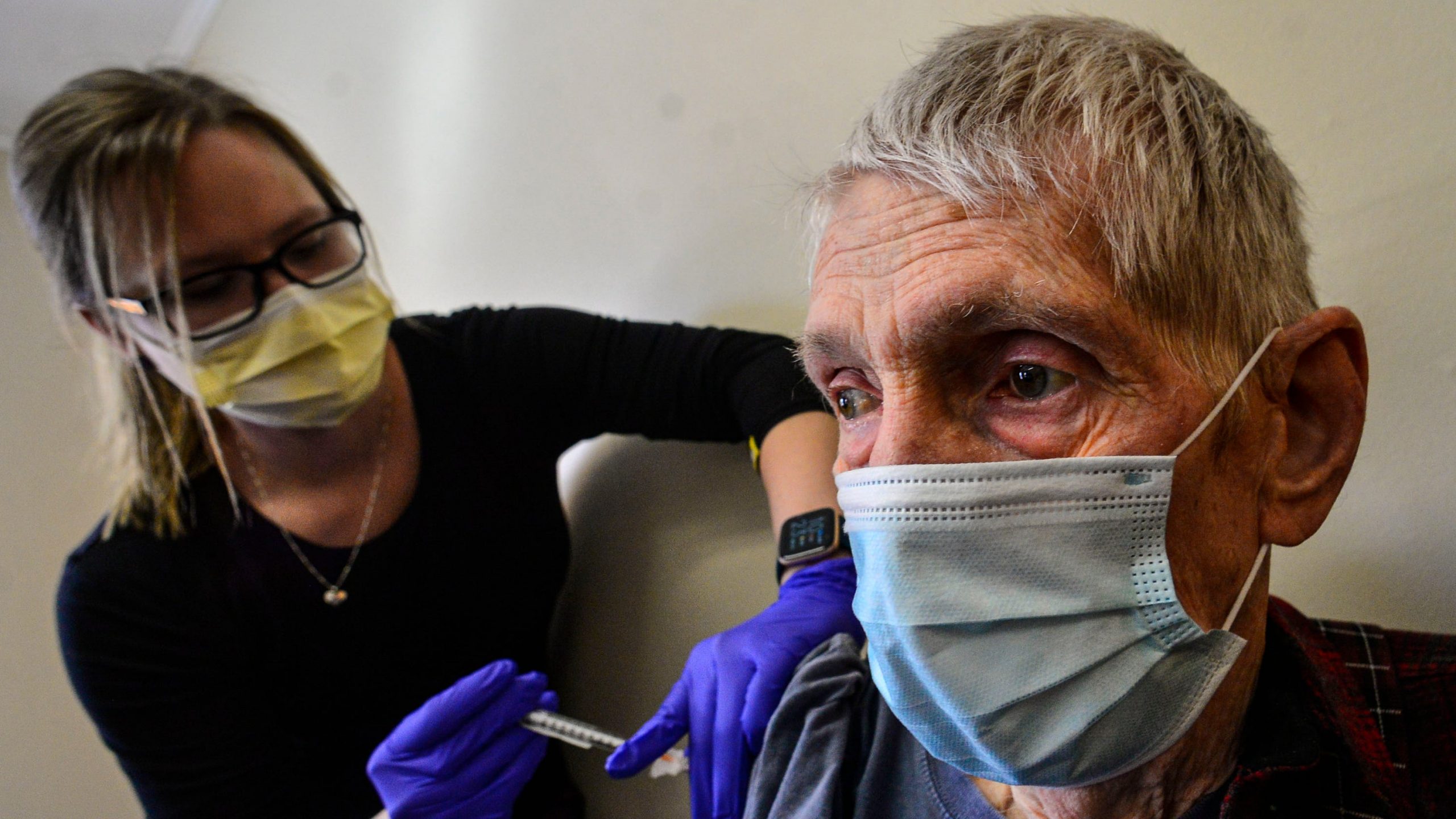Critically endangered Marsh Tacky horse shaped American history
He was born at 8:40 a.m. on April 5.
When he entered the world, the world greeted him as a soft ridge in Anderson County, South Carolina. That’s where, in the first moments of his remarkable existence, he laid in the sun, legs folded under his narrow chest.
When he entered this world, he changed it.
He is one of the rarest horses on the planet. He will be only one of maybe 15 of his breed, known as the Marsh Tacky, born this year in the horse’s native South Carolina.
These horses, still unique to the Palmetto State, are known as small and smart, as survivors. Over the course of half a millennium, they evolved on our isolated sea islands to be tough and mighty and fearless.
Once numbering in the thousands, the total estimated population today is 497 horses.
But this colt, named Hawk, is even rare among the rare: His birth that April morning represents a significant advancement in the resurgence of the breed that is older than our state and country.
Hawk’s breed can be traced to the ships Spanish colonists sailed to the sand of our shores. His ancestors carried our Revolutionary War heroes into battle and secured their victories in the depths of our dank, noxious swamps. And up until the mid-20th century, these horses moved and shaped the land for us.
Hawk’s birth is the result of almost two decades of efforts that took advocates from family farms in the low country to university labs in Spain, the halls of the statehouse to Facebook pages.
He was carefully bred to ensure that the Marsh Tacky has a future as long and storied as its past.
Josh Morgan, Greenville News
Hawk’s importance begins with his parents, a mare named Sprite and a stallion named Bird, and the two people who own them.
Sprite and Bird are not related at all, said Molly Simpson, who cares for Sprite and Hawk on her family’s land. His birth has introduced much-needed genetic diversity. There are so few Marsh Tackies left, so inbreeding entangles the branches of the family trees. This can lead to increased chances for such health issues as genetic defects and disease-resistance problems.
Both Simpson and Hawkins are members of a new generation of Marsh Tacky advocates, joining the cause about a decade after research confirmed the existence and the background of the breed in 2008.
Jeannette Beranger and the Livestock Conservancy, a nonprofit organization focused on the preservation and promotion of rare breeds, spent three years — and 20,000 miles on the road — collecting hair samples from horses that appeared to look like a Marsh Tacky. They shipped the horsehair to the University of Spain at Cordoba for DNA testing.

The horses look like smaller versions of Spanish Mustangs, standing at no more than 14.2 hands or around five feet. They have narrower chests, too, which helps keep their bodies cool. When they are born, old-timers say that Marsh Tackies look like they have two front legs coming out of the same hole. They resemble the Banker horse of the Outer Banks of North Carolina and the Florida Cracker Horse, both with Spanish ancestry and histories that began during the Colonial Era.
Beranger said she and other experts worried that by the 21st century, the Marsh Tacky might have disappeared, partly because it had been crossbred with other types of horses through the years.
The DNA tests, however, proved the horses were still here, were a unique breed and hailed originally from Spain.
She believes the modern Marsh Tackies developed from several sources. They survived Spanish shipwrecks and failed colonies on the South Carolina coast. Others came by way of the Native American deerskin trade route that went to Florida, where South Carolina Native Americans would pick up horses for the trip back home. More Spanish horses came to the colonies during the Seven Years War in the mid-18th century.
In the centuries since, the Marsh Tacky remained isolated on the sea islands and in the low country. They continued to evolve and adapt to the muggy and muddy conditions of this region. Today’s Marsh Tacky can handle the heat and muck here unlike any other horse.
“They are just an irreplaceable resource,” Beranger said. “You have 500 years of adaptation … and that’s pretty handy, especially in a time where we’re facing climate change and looking for animals that are adaptable.”
Josh Morgan, Greenville News
Beranger created the first official record of all the remaining Marsh Tackies and their lineage. It’s called a studbook or breed registry. There were only 150 horses on this first list. All but 50 were related. A hundred of them came from one farm in Ridgeland, South Carolina, run by D.P. Lowther.
No one wrote down this information, she said, so it took a lot of interviews on family farms to produce it.
She heard how folks used to say if a horse couldn’t handle the water, it wasn’t a Tacky. Even if a Marsh Tacky gets stuck in pluff mud, the oozy base of the marsh that can behave like quicksand, a Marsh Tacky doesn’t panic. They simply stop, assess the situation, sort of roll out of it on their backs, and move on.
They were the original pickup truck: All-terrain, reliable and pulling more than their weight.
She also found references to United States presidents riding Marsh Tackies on low country hunting trips. She uncovered photographs of the Coast Guard riding Marsh Tackies on the beaches of Hilton Head Island as they patrolled for Nazi U-boats. She found a colorful report from famed naturalist John James Audubon. He called the horse “as tough as pine knots.”
Josh Morgan, Greenville News
Beranger calls them this: “An American treasure.”
Marsh Tackies drove General Francis “Swamp Fox” Marion and his ragtag gang into battle. And these troops were able to outmaneuver and defeat the British atop their sure-footed backs.
The British troops rode larger European horses that foundered in South Carolina’s swampy forests. So, Marion and his Marsh Tackies would hide in the dense landscape to launch their surprise attacks.

Marion and his men were also able to elude capture because Marsh Tackies had superior endurance to the British horses. They could travel all day and required little care. The horses survived on what they could forage along the way.
Today, Marion is considered one of the heroes of the American Revolution. His cunning and determined efforts kept the American cause alive in the South, according to the Smithsonian.
A painting of Marion hangs in the U.S. Capitol. South Carolina artist John Blake White depicts Marion in the foreground sharing a meal with a British officer.
In the background, a horse, ever faithful, stands by.

The Marsh Tacky’s role in the American revolution is also outlined in the 2010 bill that designated the breed the state’s heritage horse. The legislative push came from the daughters of the American Revolution, as well as The Carolina Marsh Tacky Association, then just three years old.
The title was designed to raise awareness for the breed and educate more people about its importance, one of the first steps in a successful conservation strategy, Beranger said.
That same year, Beranger and a program at Mississippi State University published research that examined the source of the Marsh Tacky’s agility and smooth ride from the saddle. One breeder, their paper says, compares its manner of walking, or gait, to the feeling of a rocking chair.
By studying videos of the Marsh Tacky trot, they determined the horse does, in fact, have a unique gait.
“They moved in such a way that they had more foot in motion at any given time than other breeds of horse,” she said, “meaning that if you’re in a muddy, mucky situation, you’ve got your feet moving more independently of each other. And so we hypothesize this is a way for them not to get stuck in the mud as easily as other horses.”
Josh Morgan, Greenville News
Shannon Hawkins is one of the newer members of the association. One night in 2019, he sat down to watch a History Channel show with his wife, Ashley.
This show, she explained to him, is about the horses my family kept. She is a part of the Ball family, one of the founding families of Charleston, South Carolina. Her family tree also has a branch connecting to Francis Marion, she said.
Hawkins was up until about 3 a.m. that night researching the Marsh Tacky and sending out emails to breeders to learn more. He wanted a Marsh Tacky in his backyard. He wanted his family to be a part of the next chapter of the Marsh Tacky story.

The Hawkins family runs the Hawkins Heritage Farm in Reevesville, South Carolina. He has a passion for protecting and preserving rare breeds. But with the Marsh Tacky, this mission became personal, and he now has a herd of a dozen on his property.
They are, he said, the toughest animals he’s ever ridden. He hunts with them, leaping over stump holes and wading through creek beds. But they are also so docile that his young daughters, Rory and Annareese, ride them on trails.
Bird, Hawk’s father, is one of the prettiest stallions he’s ever seen, Hawkins said. He plans to hang a drawing of Bird in the Hawkins home.
He calls Bird a gentleman. He’s not high-strung. He is beauty and brains.

Laikyn Hawk, Kash Griffin, Tammy Coppage and Molly Simpson pose with their Marsh Tacky horses Estelita, Blue Jeans, Cricket and Sprite on March 29, 2021. The Marsh Tacky is believed to be a descendant of Spanish horses that evolved to have unique adaptations to the marshy low country conditions.
Bird and Sprite mated on his farm in Reevesville. Sprite was pregnant when he sold her to Molly Simpson. He didn’t want to sell Sprite initially, but he saw the connection Simpson and Sprite forged when they met. He also believed Simpson, who had never owned a Marsh Tacky before, could be a great new emissary for the breed.
“All around they are really level-headed and once you click with them, they’re with you,” Simpson said.
Just a year after buying her first Marsh Tacky, Simpson helps care for six of them in Anderson. Simpson’s mother will keep Hawk.
Marsh Tackies are “different,” Simpson said. “They just get this look into their eyes like they want to be with you.”

More and more people are seeing what makes this horse special. The online forums and the Facebook pages dedicated to the Marsh Tacky are more active and include new faces and voices, she said.
It’s a supportive group, too, with a common goal and purpose: To get the Marsh Tacky off the critically endangered list, Simpson said.
One of the horses on her family’s property is a celebrity in the Marsh Tacky world. Estelita is the first Marsh Tacky born on the horse’s native Daufuskie Island in decades. She is now owned by Laikyn Hawk, a Clemson University student and Simpson family friend.
For years, the Marsh Tacky was a way of life on Daufuskie Island. They were four-legged cars and tractors. They carried the mail and milk and the midwife.
Wild Marsh Tackies roamed on Daufuskie until the 1980s. That’s when resort developers came to the island and hired cowboys to round them up. They were treated like a nuisance.
“The heritage, legacy and the culture that can be told about South Carolina … through the Marsh Tacky is why the horse is so important and should be celebrated by everyone,” said Erica Veit, founder of Daufuskie Marsh Tacky Society.
They’ve always been a bit of an underdog, she said. She’s read that the Spanish colonists chose them for the perilous journey to the New World because they were considered expendable.
They’ve always been underestimated. There is evidence of that even in their name, given by English settlers.
The horses they found in the South Carolina colonies were much smaller than the thoroughbreds they knew back home, Veit said.
So, they called them “tacky,” meaning “cheap” or “common.”
Little did they know.

Follow Carol Motsinger on Twitter: @carolmotsinger.
Shared From Source link Breaking News



